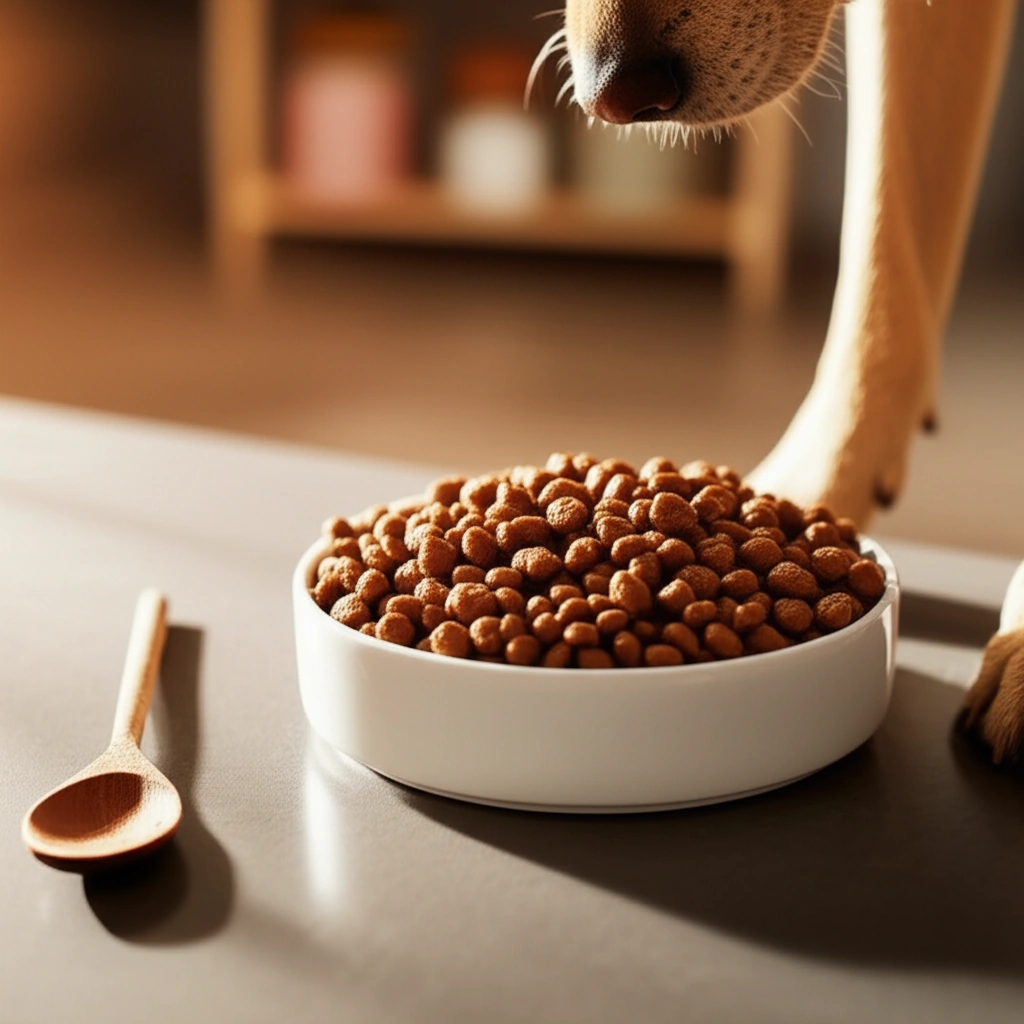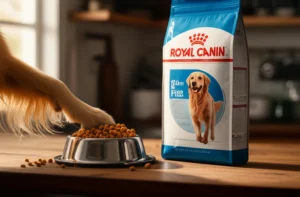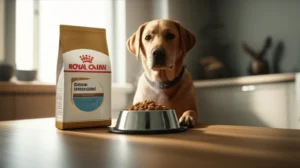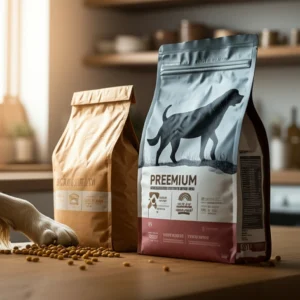Let’s get straight to it—there’s something kinda special about cracking open a can of Royal Canin dog food wet and watching your pup’s eyes go wide like it’s Christmas morning. But is it all hype, or does it actually deliver on the things that matter most? And, honestly, is it really worth the price (because, yeah, those cans add up)? Here’s what I wish someone had told me when I first stood in that pet food aisle, sweating over the options and googling “best dog food” on my phone while my dog whined impatiently.
If you’ve ever felt lost between advice from the vet, flashy marketing, and your own four-legged food critic, you’re not alone. I’ve been down this rabbit hole; it’s rough, sometimes messy, but you do eventually get to the good stuff if you dig just a bit deeper. So—ready for some refreshingly honest talk about Royal Canin dog food wet?
What Makes Royal Canin Wet Unique?
Honestly, there’s wet food… and then there’s Royal Canin dog food wet. We’re talking a pretty broad lineup here: you’ve got the classic “Adult Loaf in Sauce,” chunky pouches for small breeds, breed-specific options (yup! A can just for Shih Tzus), and special blends that focus on digestion or skin health. It’s not the same mushy mystery meat you might remember from way back—these cans are thoughtfully designed for specific stages of life, needs, and even particular breeds(like, “Oh, your dog’s got a sensitive tummy? There’s literally a Royal Canin formula for that!”).
The main appeal is how targeted everything is—Royal Canin doesn’t do “one-size-fits-all.” Puppies, adults, seniors, tiny Yorkies, giant Great Danes… there’s a precise recipe for each situation. It’s kind of like having a personal nutritionist for your dog, only instead of oatmeal smoothies, it’s pate of salmon, chicken, rice, and all sorts of vitamins your vet will smile about[1][2][3].
What’s Actually Inside Each Can?
Here’s where things get interesting. Let me break down a sample ingredient list from the Adult Loaf in Sauce (the one I nervously fed my own dog): chicken, pork liver, salmon, brewers rice, corn meal, some by-products, a dose of cellulose and thickeners, then a smattering of vitamins and minerals. Sound a bit complicated? It is. Royal Canin packs wet dog food with a mix of animal proteins, healthy grains, and fiber sources designed for serious nutritional punch—but don’t expect “raw” or “grain-free.”
There are by-products, which have a bad reputation online, but vets will tell you that not all by-products are created equal. (Some are entirely fine, while others—not so much. It’s important to read up on details; you can check out royal canin dog food ingredients for a deep dive.)
The main thing most owners notice? High moisture (think super juicy, which helps with hydration), moderate protein, lower fat compared to some ultra-premium brands, and enough fiber for, let’s just say, “beautiful” stools. Some formulas are boosted with omega oils for the coat, antioxidants for immune support, and special prebiotics for the sensitive-stomached.
Benefits: Why Choose Royal Canin Dog Food Wet?
Here’s what gets me, and frankly, what won my dog over: palatability. I swear, she licks the bowl so clean you could put it back on the shelf. Dogs who turn their noses up at dry food go after Royal Canin wet like it’s steak night. The texture and flavor seem spot-on—even for picky eaters.
If your dog struggles with drinking enough water, the high moisture content is a life-saver. Plus, for pups with sensitive digestion or those needing extra calories during recovery, these cans are so much easier to eat and digest than dry stuff.
A surprising bonus: you can shovel less food into the bowl because the right nutrients are packed into smaller servings, tailored by age, activity, and breed. (Want precise feeding numbers? Each product actually has a detailed serving guide by weight and energy level, so there’s less guessing.)
Downsides (Yes, There Are Some)
Alright, let’s talk cons—because nothing’s perfect, right? Royal Canin dog food wet is not exactly cheap. I’ve caught myself hesitating in the aisle, mental math spinning, wondering if my pup is more gourmet than practical. Cost per meal is higher than kibble, especially for large or multiple dogs. If you’re comparing with other foods, here’s a good page on royal canin dog food price—run the numbers before you commit to autoship!
Then, there are the ingredients. Some people get nervous about the by-products or thickeners, and hey, that’s valid. My take? Read the label, decide what matters most for your dog, and maybe run it past your vet—especially if your dog has allergies or sensitivities.
For pups with medical needs (like kidney issues or strict fat restrictions), not every Royal Canin formula will be the right fit. Don’t just grab the first shiny can on the shelf. There are even special dry royal canin dog food and prescription wet formulas designed for digestive problems, weight loss, or other conditions. Sometimes the best move is to work hand-in-hand with your vet—and don’t be shy about asking for samples!
Real-World Reviews: What Dog Owners and Vets Really Say
You ever buy a bag of food, then see a 2-star review and panic? Yeah, me too. But here’s what I learned after reading (too many) royal canin dog food reviews and talking with both regular dog people and a couple of vet techs:
- Palatability gets 5 stars. Even chronic picky eaters suddenly clear the bowl. People mention that mixing a little Royal Canin wet with dry kibble makes everything disappear like magic.
- Coat improvement and solid digestion: Especially with formulas focused on skin/coat or digestive health, you’ll see shinier fur and fewer runny-tummy moments after a couple of weeks.
- The big complaint? Price. Some folks get sticker shock, especially when feeding big dogs full-time on wet food. That’s where combo feeding (a bit of wet with dry) makes sense for a lot of households.
From the veterinary side, you’ll hear a lot of respect. Why? Because Royal Canin does its homework—these formulas are backed by nutritional science, not just slick marketing. Vets use and recommend them for specific needs and recovery situations all the time. Still, they’ll be the first to say: what matters most is what works for your dog’s lifestyle, taste, and health.
Pricing and Buying: What To Expect
Ready for some sticker shock? Individual cans usually run between $3 to $6 (sometimes even more, depending on formula and where you buy it). You can buy singles, but most pet parents opt for the case deals to save—and if you sign up for autoship, you can usually snag a discount, which is a lifesaver for repeat buyers. Still, it adds up, especially if you’re feeding a 60-pound Labrador!
Curious about switching flavors or mixing things up? Royal Canin is stocked at most major pet stores, specialty shops, and of course, online. And if you ever want to compare costs, those internal links on royal canin dog food price can help you get the lay of the land quickly.
Smart tip from way too many trial-and-error moments: combine Royal Canin wet with their dry food (dry royal canin dog food) to balance value and palatability, and make your stash last longer.
Feeding Guide: Doing It Right
So you’ve picked out a can…but how much do you actually feed? Don’t just eyeball it—Royal Canin provides a printed table on every can and pouch, sorted by weight and activity level. As a rule, active dogs and puppies need more, while couch-potato seniors get a bit less. I once measured portions wrong and ended up with a chubby Jack Russell. Trust me: follow the chart!
| Dog Weight | Low Activity | Moderate Activity | High Activity |
|---|---|---|---|
| 4.4 lb (2 kg) | 1/2 can (150 g) | 1/2 can (173 g) | 1/2 can (197 g) |
| 13.2 lb (6 kg) | 1 can (341 g) | 1 can (395 g) | 1 1/4 cans (449 g) |
| 22.0 lb (10 kg) | 1 1/4 cans (501 g) | 1 1/2 cans (580 g) | 1 3/4 cans (659 g) |
Switching foods? Transition gradually over a week: start with 25% new to 75% old, then step it up every couple of days. That gentle approach means you’ll dodge those… ahem… “runny surprises.”
Oh, and after opening a can, pop leftovers in the fridge with a tight lid. No one—and especially not your dog—wants to eat a bowl of crusty, dried-out food.
When Royal Canin Wet Is the Best Choice (And When To Look Elsewhere)
Who should seriously consider feeding Royal Canin wet?
- Your dog skips dry food entirely, or you’re constantly tossing out half a bowl of untouched kibble.
- You’re dealing with a tiny puppy, senior, or convalescent dog that needs extra calories and hydration.
- The vet recommends a GI or skin-support formula after diagnosis.
- Palatability is the top issue and you want fuss-free feeding time.
And when might you skip it? If you’re on a tight budget, have a very large dog or a pack at home, or if you’re ultra-sensitive about certain ingredients (like animal by-products). In that case, you might want to look into other premium wet foods or split meals with dry royal canin dog food for value.
Ingredient Deep-Dive: What Do All Those Words Mean?
Let’s get nerdy for a sec. Have you ever tried to pronounce “DL-alpha tocopherol acetate” or “sodium tripolyphosphate” on a can? Don’t sweat it. The first chunk of ingredients will usually be meaty: chicken, pork liver, or even salmon. There’s almost always rice or corn meal for carbs, then fats and fiber from vegetables or beet pulp. Cellulose? It’s just another plant fiber source.
The slippery stuff—guar gum, carrageenan—is standard for texture (think: holds pate together). The last half of the list: vitamins and minerals to lock in complete nutrition. And yes, if you ever get lost, royal canin dog food ingredients breaks down everything step by step.
For the “gastrointestinal” or sensitive stomach options, the formulas often swap tricky proteins (like beef) for more digestible choices, dial down fat, and add prebiotics or extra fiber. Great if your dog’s got a sensitive tummy.
Your Takeaway: Should You Try Royal Canin Dog Food Wet?
After all this, here’s what it boils down to: feeding Royal Canin dog food wet is less about chasing a brand and more about finding an honest match for your pet’s needs, quirks, and your real-life budget. Yes, it’s premium. Yes, it works wonders for dogs needing specific care, picky eaters, or hydration support. But it’s not a miracle in a can—just really thoughtful nutrition with a heavy dose of science behind it.
If you’re unsure, try mixing a little with your current dry food or do a short taste test. If your dog starts dancing at dinner, you’re on the right track. Just keep an eye on serving sizes and ingredients—and when in doubt, your vet is your best friend (after your dog, of course).
Conclusion
Choosing the right food can feel overwhelming—like, rip-your-hair-out overwhelming—but it really doesn’t have to be. Royal Canin dog food wet stands out for its targeted, science-backed approach to nutrition, offering clear benefits for picky eaters, dogs needing hydration, and those with specific health needs. Remember, cost and ingredient comfort are big factors for many owners; nobody likes surprises at checkout. Balance what you’re looking for—be it glowing coats, gentle digestion, or less meal-time drama—against your budget and your dog’s actual tastes. If you want to dig deeper, check out ingredient lists, read up on royal canin dog food reviews, and don’t be afraid to experiment a little. In the end, we’re all just looking for that tail-wagging, bowl-cleaning, feel-good moment at mealtime. So, go ahead—give it a try, and let your dog’s reaction be your ultimate guide!










